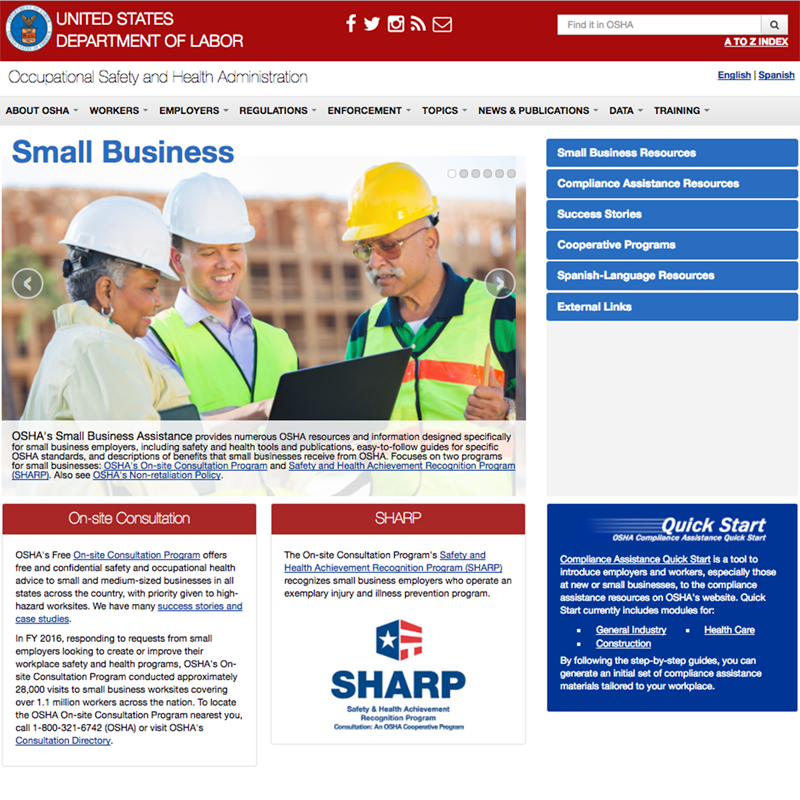Using Internet and Government Tools to Support the HR Effort
Learning Objective 2
Give four examples of how entrepreneurs can use Internet and government tools to support the HR effort.
City Garage is an expanding auto servicing company in Texas. 16 One way they distinguish themselves is by letting customers interact directly with its mechanics in what it calls its “open service area,” 17 City Garage needs mechanics who are comfortable interacting with customers in this format. The old hiring process was a paper-and-pencil application and one interview. The process ate up management time and was ineffective. The solution was to purchase the Personality Profile Analysis (PPA) online test from Thomas International USA. Now, after a quick application and background check, candidates take the 10-minute, 24-question PPA. City Garage staff then enter the answers into the PPA Software system and receive test results almost at once. These show whether the applicant is right for the job, based on four personality characteristics.
Like City Garage, no small business need cede the “HR advantage” to big competitors. Knowledgeable small business managers can level the terrain by using Internet-based HR resources, including free online resources from the U.S. government. We’ll look at how.

City Garage’s managers knew they would never implement their firm’s growth strategy without changing how they tested and hired employees.
Source: Jetta Productions/Getty Images.
Complying with Employment Laws
As one example, complying with federal (and state and local) employment law is a thorny issue for entrepreneurs. For example, the small business owner may want to know, “What can I ask a job candidate?” “Must I pay this person overtime?” and “Must I report this injury?”
Addressing such issues starts with deciding which federal employment laws apply to the company. For example, Title VII of the Civil Rights Act of 1964 applies to employers with 15 or more employees, while the Age Discrimination in Employment Act of 1967 applies to those with 20 or more. 18 Small business owners will find the legal answers they need online at federal agencies’ websites like the following.
The DOL
The U.S. Department of Labor’s (DOL) “FirstStep Employment Law Advisor” (see http://webapps.dol.gov/elaws/firststep/) helps small businesses determine which laws apply to their business. 19 First, as in Figure MB.1, click “Begin FirstStep-Employment Law Overview Advisor Now”). The elaw wizard then takes the owner through questions such as “What best describes the nature of your business or organization?” and “What is the maximum number of employees your business or organization employs or will employ during the calendar year?”

Figure MB.1 FirstStep Employment Law Advisor
Source: U.S. Department of Labor, www.dol.gov/elaws/firststep, accessed September 21, 2017.
Proceeding through the wizard, the small business owner arrives at a “results” page. This says, “Based on the information you provided in response to the questions in the Advisor, the following employment laws administered by the Department of Labor (DOL) may apply to your business or organization.” 20 For a typical small firm, these laws might include the Consumer Credit Protection Act, Employee Polygraph Protection Act, Fair Labor Standards Act, Immigration and Nationality Act, Occupational Safety and Health Act, Uniformed Services Employment and Reemployment Rights Act, and Whistleblower Act.
A linked DOL site (www.dol.gov/whd/flsa/index.htm) provides information on the Fair Labor Standards Act (FLSA). 21 It also contains several specific related links. Each provides practical guidance on questions such as when to pay overtime. Figure MB.2 presents, from the website webapps.dol.gov/elaws/, a list of elaws Advisors. 22 As we explained in Chapter 2, the website of the U.S. Equal Employment Opportunity Commission (EEOC; www.EEOC.gov/employers/) contains important information regarding matters such as how a small business can resolve a charge without undergoing an investigation or facing a lawsuit.

Figure MB.2 Sample DOL elaws Advisors
Source: U.S. Department of Labor, http://webapps.dol.gov/elaws/, accessed September 21, 2017.
OSHA
The DOL’s Occupational Safety and Health Administration site (www.OSHA.gov/) similarly supplies small business guidance. (See Figure MB.3. 23) OSHA’s site provides, among other things, easy access to the OSHA Small Business Handbook. This contains practical information, including industry-specific safety and accident checklists.

Figure MB.3 OSHA Small Business Website
Source: U.S. Department of Labor, https://www.osha.gov/dcsp/smallbusiness/index.html.
Employment Planning, Recruiting, and Selection
Internet resources can make small business owners as effective as their large competitors at writing job descriptions and building applicant pools. As we saw in Chapter 4 (pp. 100–101), the Department of Labor’s O*NET (http://online.onetcenter.org) illustrates this. 24 Its online wizard enables business owners to create accurate and professional job descriptions and job specifications quickly. Similarly, small business owners use the online recruiting tools we discussed in Chapter 5. For example, they post positions on job boards such as CareerBuilder.com, on the sites of professional associations, or on the sites of local newspapers. The accompanying Trends feature elaborates.
TRENDS SHAPING HR: Digital And Social Media 25
Recruitment and Selection Tools
Many small businesses use social media to recruit applicants. For example, LinkedIn lets employers post job openings and facilitates business networking. One recruiter reportedly looks for LinkedIn members with compelling summaries, excellent recommendations, and memberships in industry groups. On Twitter, recruiters see if a potential candidate has an appropriate username and photos. But also check Twitter for things like the person’s status updates and retweets, to see (for instance) if he or she shares useful information. Small business recruiters should also focus on the social media that makes sense for them. For example, if you’re looking for a Facebook marketing expert, look on Facebook. Or look for a photographer on Instagram. And on Facebook and LinkedIn, focus recruiting efforts on industry groups that make sense for your company. Check to see how your competitors use social media, and which communities they use.
Employment Selection
Some tests are so easy to use, they are particularly good for smaller firms. One example is the Wonderlic Personnel Test, which measures general mental ability. With questions somewhat similar to the SAT, it takes less than 15 minutes to administer the four-page booklet. The tester reads the instructions, and then keeps time as the candidate works through the 50 problems. The tester scores the test by totaling the number of correct answers. Comparing the person’s score with the minimum scores recommended for various occupations shows whether the candidate achieved the minimally acceptable score for the job in question.
The Predictive Index is another example. It measures work-related personality traits, drives, and behaviors—in particular, dominance, extroversion, patience, and blame avoidance. A template makes scoring simple. The Predictive Index program includes 15 standard benchmark personality patterns. For example, there is the “social interest” pattern, for a person who is generally unselfish, congenial, persuasive, patient, and unassuming. This person would be a good personnel interviewer, for instance.
Many vendors, including Wonderlic and the Predictive Index, offer online applicant testing and screening services. Wonderlic’s service (which costs about $8,500 per year for a small firm) first provides job analyses for the employer’s jobs. Wonderlic then provides a website that the small business applicants can log into to take one or several selection tests (including the Wonderlic Personnel Test).
The following are suggestions from Inc. magazine for supercharging a small business’s recruiting and screening processes.
Keep it in the industry. Use online job boards that target a particular industry or city to minimize irrelevant applicants. 26 For example, Jobing.com maintains city-specific job sites in over 19 states. 27 Beyond.com hosts more than 15,000 industry-specific communities.
Automate the process. Automated applicant processing systems are inexpensive enough for small employers. For example, systems from Taleo, NuView Systems, and Accolo accept résumés and help automate the screening process. NuView, which costs about $6 to $15 per month per user, asks applicants questions and bumps out those without, for instance, the required education. 28
Test online. Use online tests, for instance, to test an applicant’s proficiency at QuickBooks, or even at selling over the phone. Vendors include (as a small sample) IBM’s Kenexa, eskill.com/, selectivehiring.com, and berkeassessment.com. 29
Poll your inner circle. Tap friends and employees for recommendations, and use social networking sites such as LinkedIn. One employer says, “I get people vouching for each applicant, so I don’t have to spend hours sorting through résumés.” 30
Send a recording. InterviewStream records online video interviews for about $30 to $60. 31 It sends the candidate an e-mail invitation with a link. When he or she clicks the link, a video interviewer asks the company’s prerecorded questions. Hiring managers can review the videos at their leisure. 32
COMPLYING WITH THE LAW
Given the time pressures facing most small business owners, confirming the validity of tests one buys online or through office supply stores is probably the exception, not the rule. Many test providers will assist the employer in establishing a testing procedure. For example, as noted, Wonderlic will review your job descriptions as part of its process. Tests you order should contain validity information.
Employment Training
Small companies can’t compete with the training resources of giants like General Electric. However, as explained in Chapter 7 (Training), online training can provide, at a relatively low cost, employee training that used to be beyond most small employers’ reach. These (see Chapter 7) range from private vendors (such as www.PureSafety.com and www.skillsoft.com) to the small business administration (www.sba.gov/sitemap) and the National Association of Manufacturers (NAM). The buyer’s guide from the Association for Talent Development (www.td.org/) is a good place to start to find a vendor (check under Resources). 33
Employment Appraisal and Compensation
Small employers have easy access to computerized and online appraisal and compensation services. For example, Oracle Corporation’s ePerformance 34 facilitates performance management by enabling managers to formalize the employee’s goals and then assess progress toward meeting those goals. The eAppraisal system from Halogen Software 35 is another example.
Similarly, lack of easy access to salary surveys once hindered smaller businesses from fine-tuning their pay scales. Today, sites like www.salary.com make it easy to determine local pay rates.
Employment Safety and Health
Safety is an important issue for small employers. One European study found that the majority of all the workplace accidents and serious workplace accidents occur in firms with less than 50 employees. 36 (This is not surprising because so many people work for smaller businesses.) As explained earlier in this chapter and in Chapter 14, OHSA provides several free services for small employers. 37 These include free on-site safety and health services for small businesses, and its Sharp program, through which OSHA certifies that small employers have achieved commendable levels of safety awareness. 38
